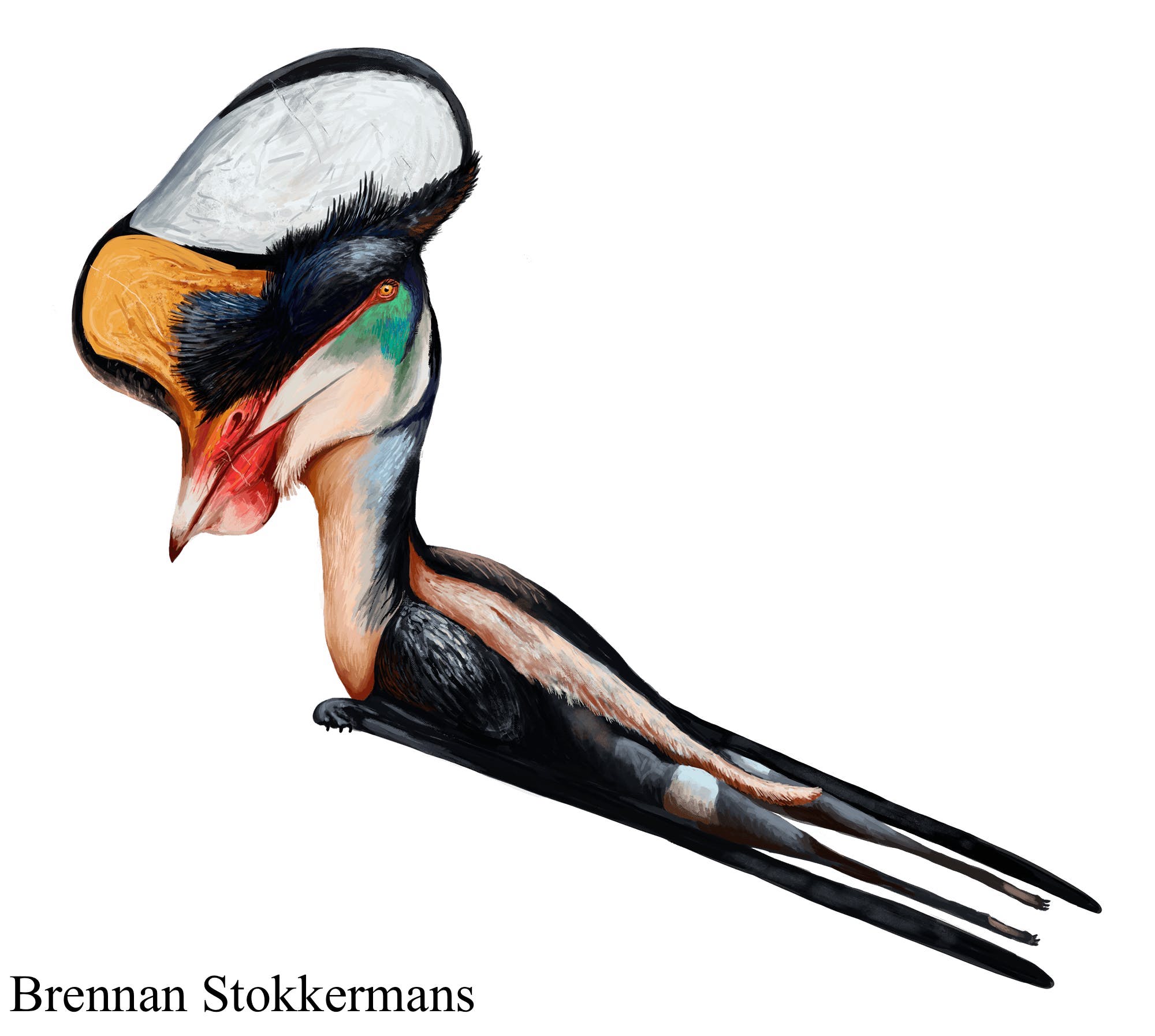Welcome to Afrotapejara

Name Definition
African Tapejara (old being in Tupi)
Name Given By
David M. Martill, Roy Smith, David M. Unwin, Alexander Kao, James McPhee & Nizar Ibrahim in 2020
Location
Kem Kem Beds in Morocco, Africa
Classification
Pterosauria, Pterodactyloidea, Tapejaromorpha, Tapejaridae
Size
based on the sizes of other tapejarids, Afrotapejara is estimated to have a wingspan of around 3.5 - 5 meters
Temporal Range
Cenomanian - Turonian stage of the late Cretaceous, 98 - 92.5 million years ago
Ecological niche
mid-sized frugivore
Species/Sub Species
A. zouhri
Diet
Afrotapejara was probably some kind of frugivore or omnivore pterosaur like its tapejarid relatives
Introduction
Afroptapejara is a genus of tapejarid pterosaurs that was first discovered in the Kem Kem Beds of Morocco and lived during the late Cretaceous epoch. Afrotapejara means “African Tapejara'' which is a reference to it being the first tapejarid discovered in Africa. The species name zouhri honors Moroccan palaeontologist Samir Zouhri. Originally, the first remains (a partial jaw) of Afrotapejara were first acquired by David Martill from a fossil trader in Erfoud, an oasis town in the Sahara Desert. In 2020, based on this fossil evidence, Martill and some colleagues named and described Afrotapejara as a new genus of pterosaur. The original holotype acquired by the trader was a snout without the tip and extended to under where the crest would be in real life. Two other fossils also consisting of snouts are also similar in build to the holotype. These two were also found in the Kem Kem Beds. The best way to tell Afrotapejara from Tapejara whom it is named after is by the crest. The crest of Tapejara is significantly taller but doesn’t extend beyond the back of the head. Afrotapejara, however, has a relatively shorter but longer crest that does extend beyond the back of the head. During its time in the Kem Kem Beds, Afrotapejara lived with a couple other genera of pterosaurs, some large and mid sized theropods, as well as some herbivores like sauropods and crocodylomorphs.